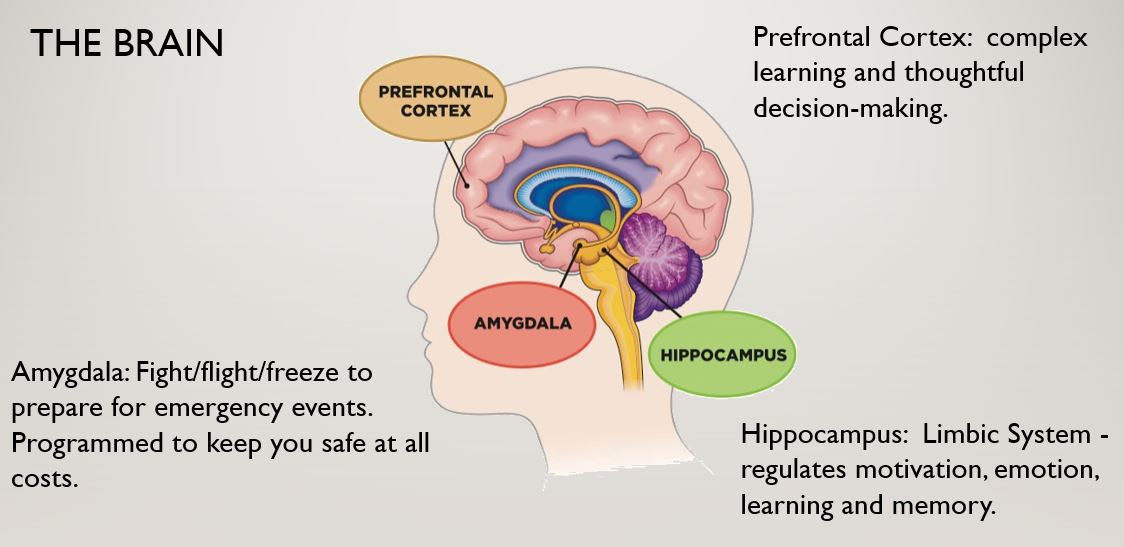In today’s fast-paced world, adversity comes in many forms—stress from work, personal struggles, the rapid pace of change of technology, and countless others. Recently, the devastating wildfires in Los Angeles have and continue to test the resilience of individuals and entire communities, now being forced to rebuild their homes and lives. These events remind us that hardships are inevitable.
That said, an often overlooked part of the human condition is that inherent in our biology is the ability to adapt and recover – indeed, the human brain is “wired” for resilience. This helps us not just survive but emerge stronger from difficult situations. Understanding how this process works allows us to harness our brain’s potential and cultivate resilience in our daily lives. Leaning into this may even make the adversity we face that much easier to overcome. Keep reading to learn more about the science of resilience, and how to apply it in 2025.
How the Brain Supports Resilience
Resilience relies on the brain’s ability to change, known as neuroplasticity. This means the brain can adapt and form new connections to deal with stress and challenges. Three key parts of the brain play a major role in resilience:
- Prefrontal Cortex: This part helps with logical thinking, making decisions, and staying calm during tough situations. It keeps us from reacting impulsively to stress.
- Amygdala: Known as the brain’s emotional center, it processes emotions like fear and stress. When managed well by the prefrontal cortex, the amygdala helps us respond to challenges without becoming overwhelmed.
- Hippocampus: This region handles learning and memory. It helps us reflect on difficult experiences and turn them into valuable lessons for the future.
These areas work together to help us adapt and grow stronger when life throws obstacles our way. Understanding how they function gives us a better idea of how we can build resilience over time.
Resilience: A Survival Skill
Resilience has always been a key survival tool for humans. Early humans faced constant dangers, like predators and extreme weather, and had to adapt quickly to survive. Their resilience allowed them to remain resourceful and hopeful even in the worst situations. Today, our challenges may look different, such as school deadlines, job pressures, or personal setbacks, but the brain’s ability to adapt remains just as vital.
Resilience isn’t just about surviving—it’s about thriving. It’s what allows us to learn from tough times and use those experiences to grow. By understanding that challenges are a natural part of life, we can approach them with the mindset that we have the tools to overcome them.
Building Your Resilience
The great thing about resilience is that it’s not fixed. It’s like a muscle that gets stronger with regular use. You can actively work on improving your resilience through small, everyday actions. Here are some ways to strengthen it:
- Practice Mindfulness: Mindfulness involves focusing on the present moment and calming your mind. Techniques like meditation or deep breathing can help you stay centered and manage stress more effectively.
- Build Strong Connections: Spending time with friends, family, or mentors who support and encourage you can make a big difference. Strong relationships provide a sense of safety and belonging.
- Stay Active: Physical activity not only boosts your mood but also supports brain health. Exercise releases endorphins, which can help you feel more positive and capable.
- Learn from Setbacks: Instead of seeing failures as the end, view them as opportunities to grow. Ask yourself, “What can I learn from this situation?” and use that knowledge to improve.
- Focus on Gratitude: Taking time to reflect on the good things in your life can help shift your perspective. Gratitude practices remind you of the positives, even during tough times.
- Set Small Goals: Achieving even small objectives can build your confidence and motivate you to tackle bigger challenges. Each success strengthens your belief in your ability to overcome obstacles.
Resilience in Action
Every day, people demonstrate resilience in big and small ways. For example, someone recovering from an injury might push through physical therapy to regain their strength. A student struggling in school might reach out for help and discover new ways to learn. Entire communities often come together to rebuild after natural disasters, showing that resilience isn’t just an individual trait but also a collective strength.
These examples remind us that resilience is universal. We all have the ability to bounce back, no matter the situation. When we tap into this strength, we find that we are capable of more than we ever imagined.
Using Resilience Every Day
Knowing that resilience is a natural part of who you are can help you face life’s challenges with more confidence. By practicing habits that build resilience, you’re not just preparing for tough times—you’re creating a mindset that helps you grow stronger with each experience.
Resilience isn’t about avoiding difficulties. It’s about facing them head-on and learning from them. Every challenge is an opportunity to grow and improve. Over time, you’ll find that your ability to adapt and recover becomes second nature.
So the next time you face a tough situation, remember this: resilience is already inside you. With effort, practice, and a belief in your own strength, you can bounce back and move forward. The human brain is built to support you—all you have to do is trust its incredible power to adapt and thrive.


